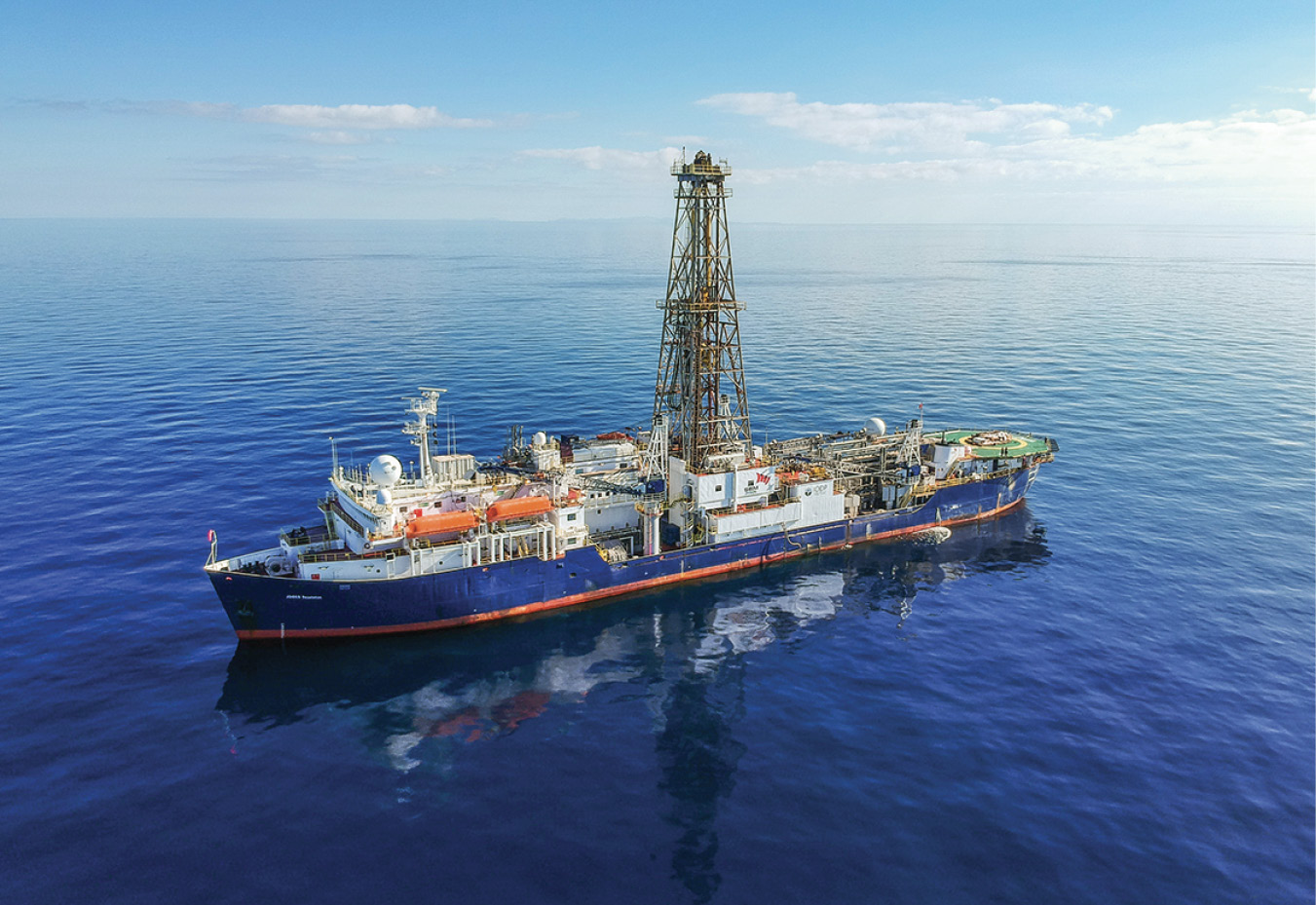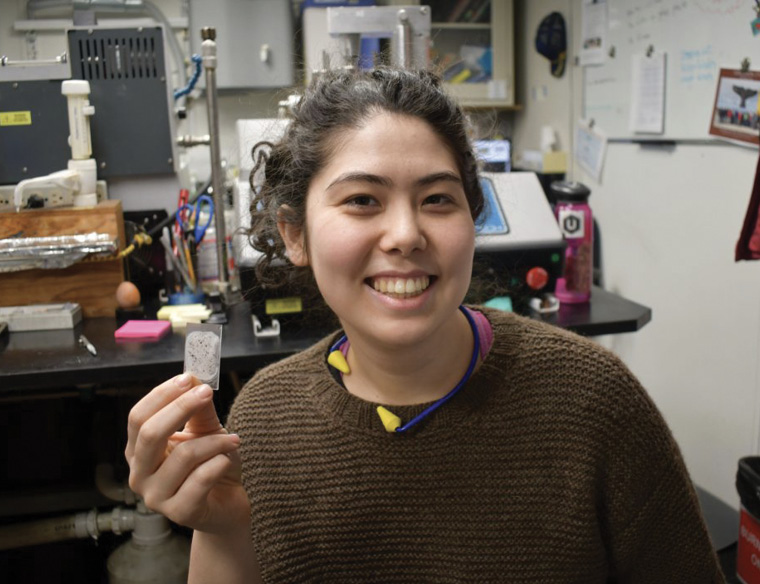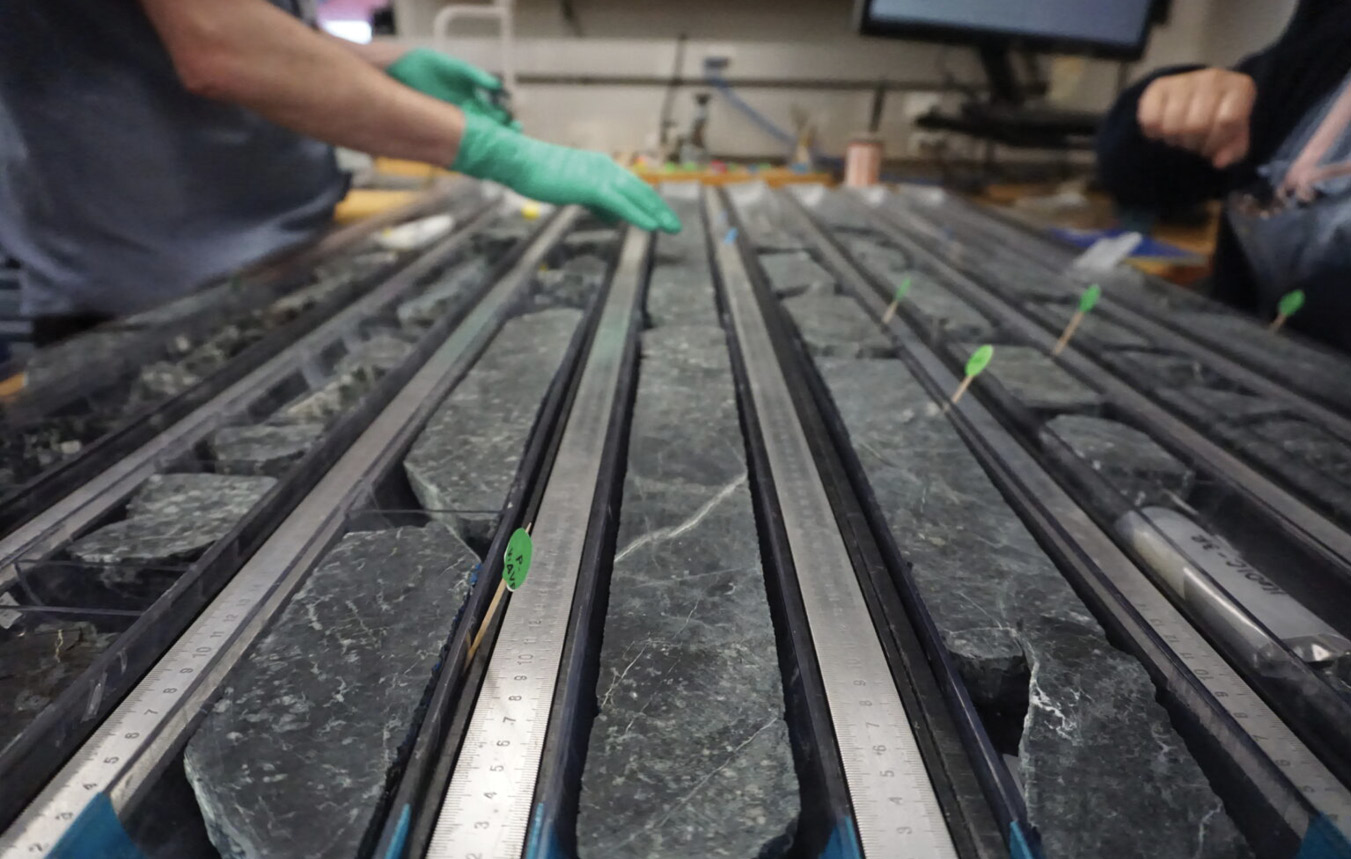Impending ship retirement leaves ocean-drilling researchers adrift
DOI: 10.1063/PT.3.5306
After nearly 40 years, the JOIDES Resolution (JR) will quit drilling into Earth’s oceanic crust for scientific research at the end of 2024, four years earlier than expected. NSF announced the ship’s retirement this past March. Despite the vessel’s continued contributions to exploring Earth’s history and climate, the US and its 20 international partners can no longer sustain the ship’s increasing costs for drilling operations, says Jim McManus, director of NSF’s division of ocean sciences. The unexpected decision leaves scientists who rely on ocean drilling wondering what is next for their research, careers, and community.
The JR got its start in 1985 under the US Ocean Drilling Program, which became the Integrated Ocean Drilling Program in 2003 and then the International Ocean Discovery Program (IODP) in 2013. The JR is one of three ocean drilling projects operating under the IODP. The others are Japan’s Chikyu and the European Consortium for Ocean Research Drilling (ECORD), which conducts missions through various hired vessels. The Chikyu and ECORD have completed 17 and 8 expeditions, respectively, compared with the JR’s nearly 200.

The Joides Resolution cruises on the Aegean Sea earlier this year.
THOMAS RONGE/IODP JRSO

The JR brings together scientists from multiple disciplines, including environmental science, geoscience, and sedimentology. The vessel can carry up to 50 scientists and technicians in addition to 65 crew members. Every year the JR averages four or five expeditions, each lasting two months.
To collect samples, researchers lower a long pipe into the oceanic crust, drill a hole, and collect a core of material. The pipe can reach depths up to 7 kilometers below sea level. The cores, which measure about 9.5 meters in length and 6 centimeters in diameter, are brought back to the ship and analyzed in one of its five onboard labs. Researchers collect hundreds of cores during each expedition. “There is this incredible moment of wonder when you are bringing a core off a new blank spot on the map and splitting it open for the first time,” says Luan Heywood, an IODP research associate based at Texas A&M University and a JR marine-science technician. “You’re seeing some rocks that are probably millions of years old and have never been seen by a human.”
Over the years, researchers aboard the JR have, for example, found microbes in encrusted ocean rock; discovered pollen in the Arctic and Antarctic, which indicates tropical plants once existed there; and analyzed sediments from the crater formed by the asteroid impact that killed the dinosaurs. The findings collectively advance the understanding of Earth’s evolutionary and climate history. During a recent JR expedition, scientists pulled up a record-breaking amount of rock from the mantle, which, more than a kilometer beneath Earth’s crust, is difficult to access.
The current annual operational costs of the JR are $72 million; NSF representatives would not say how much the cost has gone up. In a virtual town hall meeting on 6 July, McManus said that the contributions from international partners decreased from $16.5 million in 2015 to $12.5 million in 2023. The US covers about two-thirds of the operational costs but receives only about one-third of the allocated science spots on expeditions, McManus tells Physics Today.
A jolt to research
The loss of the JR will hit early-career scientists especially hard; roughly one-third of the scientists on board are graduate students. “So many of the people that I know and am connected with on social media have started their careers by going on the JOIDES Resolution,” says US Science Support Program (USSSP) communications officer Maya Pincus, who disseminates information about the JR to the public. Because operations on the JR are 24/7 for 60 days straight, participants tend to have many networking opportunities.

Joides Resolution technician Luan Heywood holds a rock that was deposited by a long-ago melted Antarctic iceberg. The sample is about 30 microns thick.
LUAN HEYWOOD

“Sailing on board the JOIDES Resolution as a young scientist changed my career, as we uncovered unexpected materials and I started new collaborations with colleagues that will remain lifelong friends,” says Sietske Batenburg, a stratigraphy lecturer at the University of Barcelona. “I will miss the sense of camaraderie and adventure.”
The USSSP ran workshops in August to help redirect early-career scientists in the ocean-drilling community, Pincus says. Although there are no concrete plans for the younger scientists, NSF said in its March announcement that future mission-specific expeditions conducted through alternative platforms are a possibility.
“It’s hard to know what is going to come next in terms of where all my coworkers are going to go,” says Heywood. Those who are visiting members on JR expeditions can go back to their jobs. Others who work on the technical staff, like Heywood, may still be employed at core repositories, which contain hundreds of kilometers of previously drilled material available for study. Downsizing is almost certain, she adds, and it is unclear what future scientific ocean-drilling efforts will look like.
Researchers will also be more limited in where they collect new data. Many will be able to turn to stored cores. The IODP places cores in repositories at Texas A&M, the University of Bremen in Germany, and Kochi University in Japan. But legacy cores aren’t an option for everyone. When a core is brought up to the ship, microbiologists get their samples first before the core is split and exposed to microbes in the surrounding environment, says Jessica Labonté, a marine microbiologist at Texas A&M. Without the JR, researchers in microbiology and in other disciplines will have to rely on other scientific ocean-drilling expeditions, meaning researchers will have fewer opportunities to sail each year.

Researchers examine a sample of mantle rock that was pulled up from more than a kilometer below the ocean floor.
LESLEY ANDERSON/US ANTARCTIC PROGRAM & IODP JRSO

Replacing the JR was always on the horizon. Even if NSF had continued its funding, the JR would have operated only until 2028, the end of the period covered by its environmental impact statement. In the town hall meeting, McManus said retiring the JR in 2024 would give NSF more time to plan for the future of ocean drilling rather than scramble at the end of 2028. It will take at least 15–20 years to gain financial backing and construct a new ship available for expeditions, he added.
Japan and the countries involved in ECORD plan to continue working together in ocean drilling after the IODP cooperative agreement ends late next year. NSF is in talks about US participation in future international collaborations in ocean drilling, McManus says, but the agency does not want to rely on such a collaboration to be sustainable.
